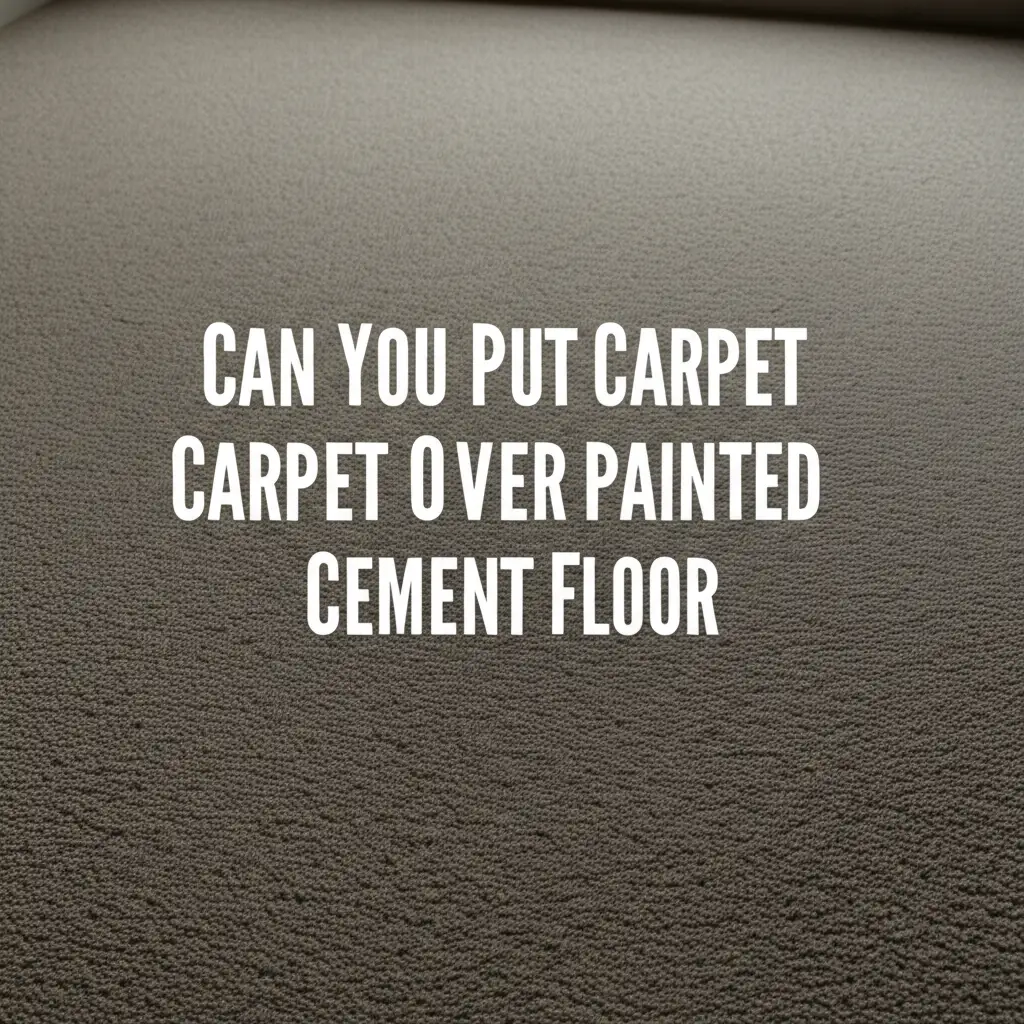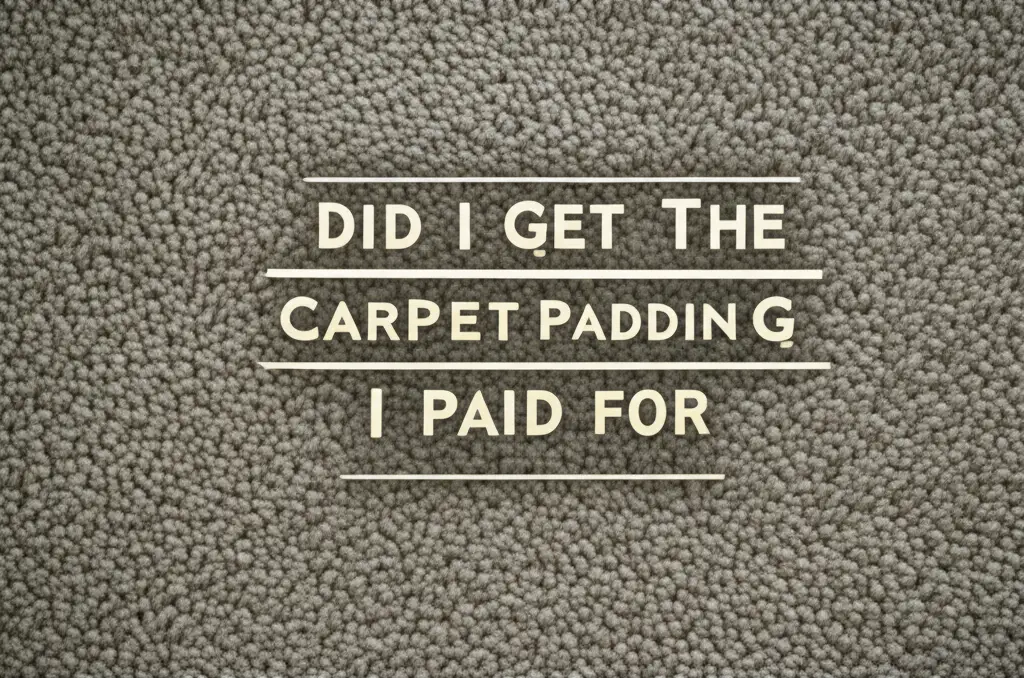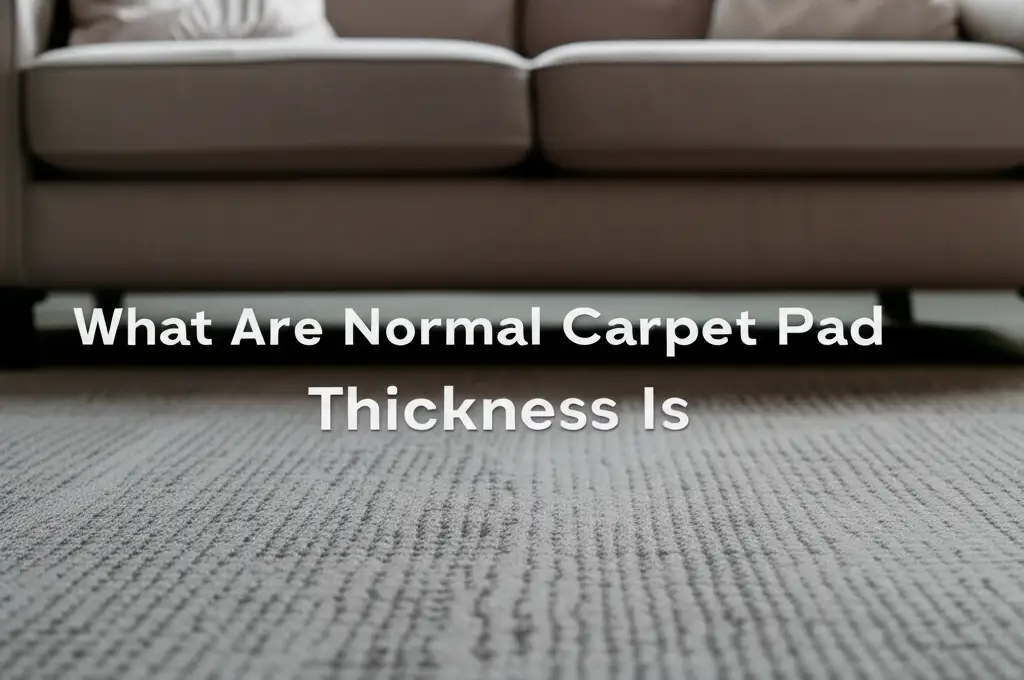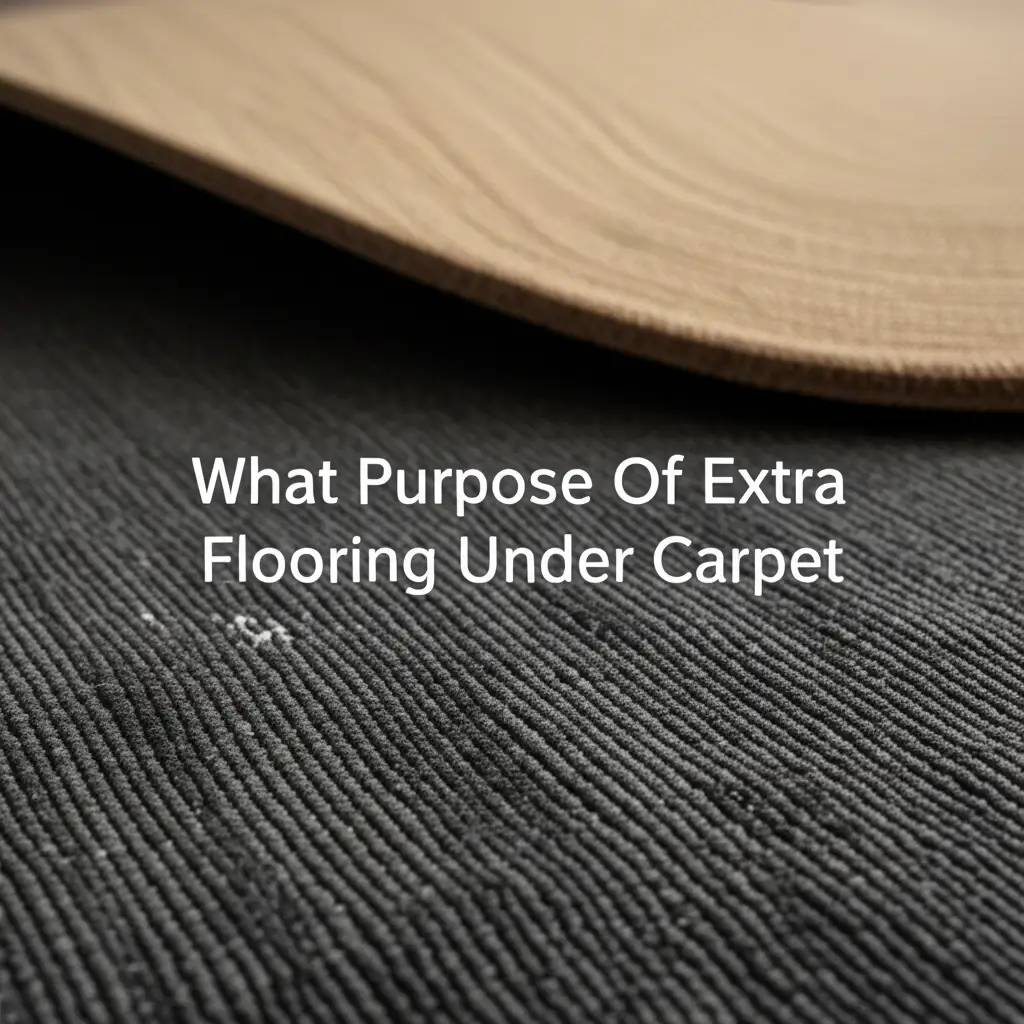· Liora Benning · Flooring · 11 min read
Can You Put Carpet Over Painted Cement Floor

Can You Carpet Over Painted Cement? A Definitive Guide
Imagine turning a cold, hard cement space into a cozy, inviting room. Many people ask, “Can you put carpet over painted cement floor?” This is a common question, especially for basements, garages, or older homes with concrete slabs. The answer is yes, you certainly can put carpet over a painted cement floor. However, successful carpet installation requires careful preparation and attention to detail. Skipping steps can lead to problems like mold, poor adhesion, or a ruined carpet. This article guides you through the process. We discuss preparing your painted concrete surface, addressing moisture issues, choosing the right carpet, and installing it correctly.
Takeaway
- Prepare the surface: Clean, repair, and smooth the painted cement floor.
- Test for moisture: Perform a moisture test on the concrete slab.
- Apply a moisture barrier: Use a vapor barrier or sealant to prevent moisture damage.
- Choose suitable carpet and padding: Select materials appropriate for concrete subfloors.
- Install correctly: Use proper methods like tack strips or direct glue-down.
You can put carpet over a painted cement floor. It requires thorough cleaning, surface repairs, and critical moisture management. Without these steps, mold, mildew, and carpet damage can occur. Proper preparation ensures your new carpet looks good and lasts a long time.
Understanding Your Painted Cement Floor
Your painted cement floor needs a thorough assessment before any carpet installation begins. The existing paint affects how new carpet adheres and performs. Paint might be old, peeling, or have a glossy finish. These conditions can prevent proper bonding.
I always start by examining the paint’s condition. Look for any areas where the paint is chipping, cracking, or flaking. Loose paint will not provide a stable base for your carpet. You might need to scrape off loose paint or even sand the entire surface. A smooth, stable surface is important. It ensures the carpet or its adhesive will stick firmly.
Next, consider the type of paint. Some paints are more durable than others. Epoxy paints, for example, create a very hard and often smooth finish. This smoothness can reduce adhesion for carpet glues. You may need to rough up the surface slightly. This creates a better profile for the adhesive to grip. Understanding your floor’s current state is the first critical step to a successful project.
Moisture is another major concern with concrete floors, especially in basements. Even if the floor looks dry, moisture can seep up through the concrete. This moisture can ruin your carpet. You must address it before you begin. Checking for moisture helps you choose the right barrier.
Why Preparation is Key for Carpet Installation
Proper preparation of your painted cement floor is the most important step. It determines the success and longevity of your new carpet. Neglecting preparation leads to many problems later on. These problems include mold, mildew, odors, and carpet buckling.
First, a clean surface ensures proper adhesion. Any dirt, dust, or debris on the painted concrete will prevent adhesives from sticking. This causes the carpet to lift or shift over time. I always clean the floor thoroughly before anything else. This provides a clean foundation.
Second, a smooth surface is vital for a flat carpet installation. Unevenness in the cement or peeling paint will show through the carpet. This creates an unsightly finish. It can also lead to premature wear in high spots. Filling cracks and leveling low areas makes the floor ready for carpet.
Third, managing moisture prevents significant damage. Concrete is porous. It can wick moisture from the ground up. This moisture gets trapped under the carpet. It creates a perfect environment for mold and mildew growth. A proper moisture barrier protects your carpet from this unseen enemy. Neglecting this step often leads to expensive repairs and replacements later. Without good preparation, your beautiful new carpet will not last.
Essential Steps for Floor Preparation
Preparing your painted cement floor is a multi-step process. Each step ensures a clean, dry, and stable base for your carpet. I follow these steps carefully every time.
First, clean the floor thoroughly. Begin by sweeping or vacuuming up all loose debris. Then, use a mild detergent and water to scrub the entire painted surface. This removes dirt, grease, and grime. Rinse the floor completely with clean water. Allow it to dry fully. Ensure no cleaning residue remains.
Second, address any existing paint issues. If the paint is peeling, chipping, or flaking, you must remove it. Use a paint scraper, wire brush, or even a floor grinder for larger areas. Sanding the entire painted surface helps create a profile for better adhesion. It also removes any glossy sheen that might prevent glue from bonding. This rougher surface helps the carpet adhere better.
Third, repair any cracks or holes in the cement floor. Use a concrete patch or leveling compound. Follow the product instructions for mixing and application. Ensure the patches dry completely and are flush with the surrounding floor. A smooth, level surface prevents imperfections from showing through the carpet. This preparation work is crucial for a professional-looking result. If you are working in a basement, consider how to sealing basement concrete floor before carpet to address underlying moisture issues.
Addressing Moisture Concerns in Concrete Floors
Moisture is the biggest enemy of carpet installed over concrete. Concrete is porous, even when painted. It can allow water vapor to rise from the ground beneath. This vapor can get trapped under your carpet and padding. Over time, trapped moisture causes mold, mildew, and unpleasant odors. It also degrades the carpet adhesive and the carpet backing.
You must perform a moisture test before you lay any carpet. A simple test involves taping a 2x2 foot piece of plastic sheeting tightly to the concrete floor. Leave it for 24-72 hours. Check for condensation on the underside of the plastic or a darkening of the concrete. If you see moisture, your floor has a vapor problem. Professional moisture meters provide more precise readings.
If moisture is present, you need a vapor barrier. Options include liquid moisture barriers applied directly to the concrete. Another option is a plastic sheeting vapor barrier installed between the concrete and the carpet padding. These barriers prevent moisture from reaching your carpet. Do not skip this step, especially in basements or on slab-on-grade foundations. Proper moisture management ensures your carpet stays dry and healthy for years. This step is critical, much like understanding if you can put carpet over in-floor heat, where moisture and heat interaction are key considerations.
Choosing the Right Carpet and Padding
Selecting the correct carpet and padding is important when installing over a painted cement floor. Not all carpets are suitable for concrete applications. Your choices affect comfort, durability, and moisture resistance.
When choosing carpet, look for options with synthetic fibers like nylon, polyester, or olefin. These materials resist moisture better than natural fibers. Low-pile carpets often work well on concrete. They are durable and less prone to showing imperfections from the subfloor. Consider glue-down carpet tiles for added convenience and moisture control. These tiles often have integrated backings that handle moisture well. They also allow for easy replacement of damaged sections.
The padding choice is just as critical. A dense, synthetic padding with a moisture barrier is ideal. Avoid traditional foam padding that can absorb moisture. Look for padding specifically designed for concrete applications. Many have a built-in vapor barrier layer. This extra layer provides an important defense against rising moisture. Proper padding improves carpet comfort, insulation, and longevity. It also protects the carpet from concrete abrasions. Selecting the right materials ensures your carpet performs well on a cement floor.
Carpet Installation Methods for Concrete
You have a few main options for installing carpet over a painted cement floor. The best method depends on your carpet type, desired permanence, and moisture conditions. I consider the specific needs of each project.
One common method uses tack strips. You nail or glue these wooden strips around the perimeter of the room. The strips have sharp pins that grip the carpet. A carpet stretcher pulls the carpet taut onto the strips. This method creates a smooth, professional finish. It allows for easier carpet replacement later. You must use concrete nails or strong construction adhesive to secure the tack strips to the painted concrete.
Another popular method is direct glue-down. This involves applying a strong adhesive directly to the prepared concrete floor. You then lay the carpet over the adhesive. This method works well for low-pile carpets and carpet tiles. It provides a very secure bond. Ensure the adhesive is suitable for concrete and the carpet backing material. Always follow the adhesive manufacturer’s instructions for drying times and application. Direct glue-down is a good option in areas with heavy foot traffic.
For smaller areas or temporary installations, double-sided carpet tape can be used. However, this method is generally not recommended for permanent installations over concrete. It does not provide the same durability or moisture protection as tack strips or glue-down. No matter the method, ensuring the carpet stays flat and secure is key, as highlighted by tips on how to keep a carpet down.
Long-Term Maintenance and Considerations
After installing carpet over your painted cement floor, proper maintenance ensures its longevity. Regular care protects your investment. It keeps your new flooring looking great.
Vacuum your carpet regularly to remove dirt and grit. Dirt can wear down carpet fibers over time. Use a vacuum cleaner with strong suction. Address spills immediately to prevent stains from setting. Blot liquids with a clean cloth. Avoid rubbing, as this can spread the stain. For tougher spots, use a carpet cleaner recommended for your carpet type.
Consider placing walk-off mats at entryways. These mats trap dirt and moisture before they reach your carpet. This simple step significantly reduces wear and tear. Periodically, you might want to professionally clean your carpet. Professional cleaning removes deep-seated dirt and allergens. It also helps revitalize the carpet fibers.
Finally, continue monitoring for any signs of moisture. Even with proper barriers, concrete can be unpredictable. Look for musty odors, damp spots, or buckling carpet. These signs indicate a moisture problem that needs immediate attention. Addressing issues quickly helps prevent extensive damage. With consistent care, your carpet over painted cement will provide comfort and beauty for many years.
FAQ Section
Do I need to remove the paint from the cement floor before carpeting?
You do not always need to remove all paint. You must remove any loose, peeling, or flaking paint. Sanding the remaining painted surface creates a rougher texture. This texture helps the carpet adhesive bond better. A smooth, glossy paint surface needs scuffing.
What kind of moisture barrier should I use for a concrete floor?
For concrete floors, use a liquid moisture barrier coating or a thick polyethylene plastic sheeting. Liquid barriers are applied like paint. Polyethylene sheeting is laid over the concrete. Both prevent moisture vapor from rising and damaging the carpet.
Can I glue carpet directly to a painted concrete floor?
Yes, you can glue carpet directly to a properly prepared painted concrete floor. Ensure the paint is well-adhered and stable. Use a strong, appropriate adhesive designed for both concrete and your specific carpet backing. Always follow the adhesive manufacturer’s instructions for best results.
How long does the floor preparation take?
Floor preparation time varies. Cleaning and drying can take 1-2 days. Repairing cracks and leveling uneven spots may add another day or two for curing. Moisture testing requires 24-72 hours. Overall, plan for several days to a week for thorough preparation.
What are the signs of moisture problems under new carpet?
Signs of moisture problems include a musty smell, visible mold or mildew, damp spots on the carpet, and carpet buckling or delamination. These issues often appear shortly after installation. Prompt action is necessary to prevent further damage and unhealthy conditions.
Is special carpet padding needed for concrete floors?
Yes, special padding is recommended. Choose a dense, synthetic carpet padding. Many have an integrated moisture barrier on one side. This padding resists moisture absorption. It also protects the carpet from the hard concrete subfloor. Avoid traditional foam padding without a moisture barrier.
Conclusion
Putting carpet over a painted cement floor is a perfectly achievable home improvement project. It transforms a cold, uninviting space into a warm, comfortable area. The key to success lies in thorough preparation. You must clean the surface meticulously, repair any imperfections, and crucially, address all moisture concerns. Using a proper moisture barrier is not an option; it is a necessity for any carpet installation over concrete.
By selecting the right carpet and padding for concrete applications, and employing correct installation methods, you ensure a durable and beautiful result. Remember to test for moisture, choose a high-quality adhesive or appropriate tack strips, and maintain your carpet regularly. With these steps, your “can you put carpet over painted cement floor” question turns into a confident “yes, and here’s how I did it.” Enjoy your newly carpeted space for years to come.
- carpet installation
- painted concrete
- cement floor
- basement flooring
- subfloor preparation
- moisture barrier
- DIY flooring





